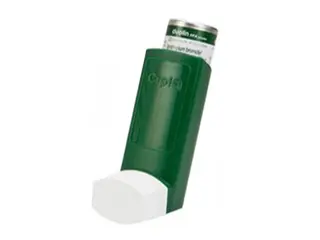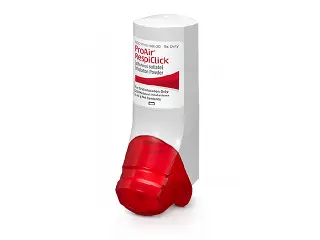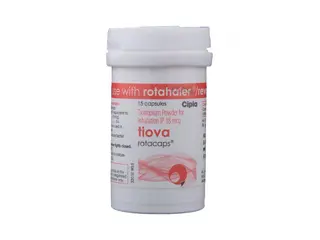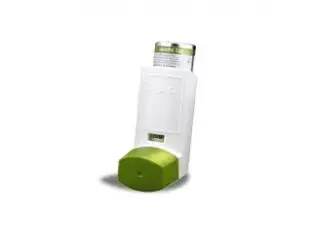Asthma





.webp)




Find effective asthma medications and relief products to manage your symptoms and improve breathing. Shop inhalers, corticosteroids, bronchodilators, and essential accessories for asthma care at affordable prices. Fast shipping and trusted brands available.
Asthma is a chronic lung disease that inflames and narrows the airways. Managing asthma often requires medication to control symptoms and prevent attacks. Various inhalers, pills, and powders are available to help patients breathe easier and reduce inflammation.
Combivent is a popular inhaler combining ipratropium bromide and albuterol sulfate. It helps open airways quickly and is used for relief of bronchospasm. Many users find it effective for rapid symptom control, especially during flare-ups.
ProAir Inhaler contains albuterol sulfate, a short-acting beta-agonist. It works fast to relax muscles around airways. Patients often keep ProAir handy for sudden asthma symptoms. It provides quick relief but is not for regular use to control asthma long-term.
Proventil is another albuterol inhaler similar to ProAir. It is widely used and trusted for rescue relief. Proventil helps reduce wheezing and shortness of breath during asthma attacks.
Pulmicort contains budesonide, a corticosteroid. It acts by reducing airway inflammation over time. This inhaler is meant for regular use to prevent asthma symptoms. Pulmicort has a gentle effect and is often prescribed for mild to moderate asthma.
Rhinocort is also a corticosteroid but mainly used as a nasal spray. For asthma sufferers with allergic rhinitis, Rhinocort can relieve nasal airway inflammation. It complements asthma treatment by tackling nasal symptoms.
Seroflo Inhaler combines fluticasone and salmeterol. It provides both anti-inflammatory effects and long-acting bronchodilation. Many patients benefit from Seroflo’s dual action for better control of persistent asthma. It helps reduce frequent symptoms and improve lung function.
Singulair is an oral medication containing montelukast. It blocks leukotrienes, chemicals causing airway inflammation and narrowing. Singulair is often added to inhaler therapy. Patients appreciate its convenience as a once-daily pill for asthma maintenance.
Spiriva is a long-acting anticholinergic inhaler (tiotropium bromide). It relaxes airway muscles and prevents bronchospasm. Spiriva is used mostly in severe asthma cases or COPD. Its effects can last up to 24 hours, offering steady relief.
Symbicort is a powder inhaler combining budesonide and formoterol. Formoterol is a long-acting beta-agonist, while budesonide reduces inflammation. Symbicort users benefit from fast onset and long-lasting asthma control. It is popular for daily maintenance as well as symptom relief.
Theo-24 CR and Theo-24 SR are sustained-release tablets of theophylline. This drug helps relax airway muscles and improve breathing. Some patients use Theo-24 for asthma persistence, but monitoring is necessary due to side effects and interactions.
Tiova Inhaler and Tiova Rotacap contain tiotropium, similar to Spiriva. They provide long-lasting bronchodilation and are used in both asthma and COPD treatment. These inhalers help reduce the frequency of asthma exacerbations.
Uniphyl CR is another controlled-release theophylline pill. It is taken regularly to help relax bronchial muscles and improve airflow. Patients using Uniphyl CR must have their blood levels checked to avoid toxicity.
Ventolin Inhaler is a classic rescue inhaler with albuterol sulfate. It acts quickly to ease acute asthma symptoms like wheezing and tightness. Ventolin is commonly recommended for emergencies and sudden attacks.
Ventolin Pills are also available but less commonly used due to slower action and more side effects. Inhaled forms like Ventolin Inhaler are preferred for quick relief.
In summary, asthma medications fall into two main types: quick-relief inhalers and long-term control drugs. Quick-relief options include ProAir, Proventil, Ventolin, and Combivent. These help during sudden asthma attacks. Long-term controllers like Pulmicort, Seroflo, Symbicort, Singulair, Spiriva, and theophylline products prevent symptoms and reduce airway inflammation.
Choosing the right medication depends on asthma severity, frequency of symptoms, and individual response. Many patients use a combination of inhalers and pills for optimal control. Regular check-ups with a doctor are important to adjust treatment and minimize side effects.
The inhaled corticosteroids such as Pulmicort and Symbicort are essential for reducing airway inflammation. They help prevent flare-ups and improve lung function over months of use. Adding long-acting bronchodilators like formoterol in Symbicort or salmeterol in Seroflo gives dual benefits for daily symptom control.
Leukotriene receptor antagonists like Singulair offer an oral alternative to inhalers, especially for those who struggle with inhalation technique. They are effective in patients with both asthma and allergic rhinitis.
Anticholinergic options such as Spiriva and Tiova keep airways open for extended periods, reducing the need for frequent use of short-acting inhalers. They are especially useful in severe asthma cases or overlapping COPD.
Theophylline drugs like Theo-24 and Uniphyl CR have been used for many decades. Although not first-line treatment today, they remain helpful for some patients under medical supervision. Theophylline requires blood monitoring due to its narrow therapeutic window.
Inhalers remain the most common and effective delivery form. They directly target the lungs, maximizing benefits and reducing systemic side effects. Powder forms like Symbicort are breath-activated and preferred by many for ease of use.
Rescue inhalers such as Ventolin, ProAir, and Combivent provide fast relief. They are vital for emergency use but should not replace regular controller medication. Overusing rescue inhalers may indicate poorly controlled asthma.
Overall, effective asthma treatment involves balancing symptom relief with inflammation control. The newest combination inhalers provide convenience and improved outcomes. Patients should follow prescribed treatment plans and report any side effects or changes in symptoms to their healthcare providers.





